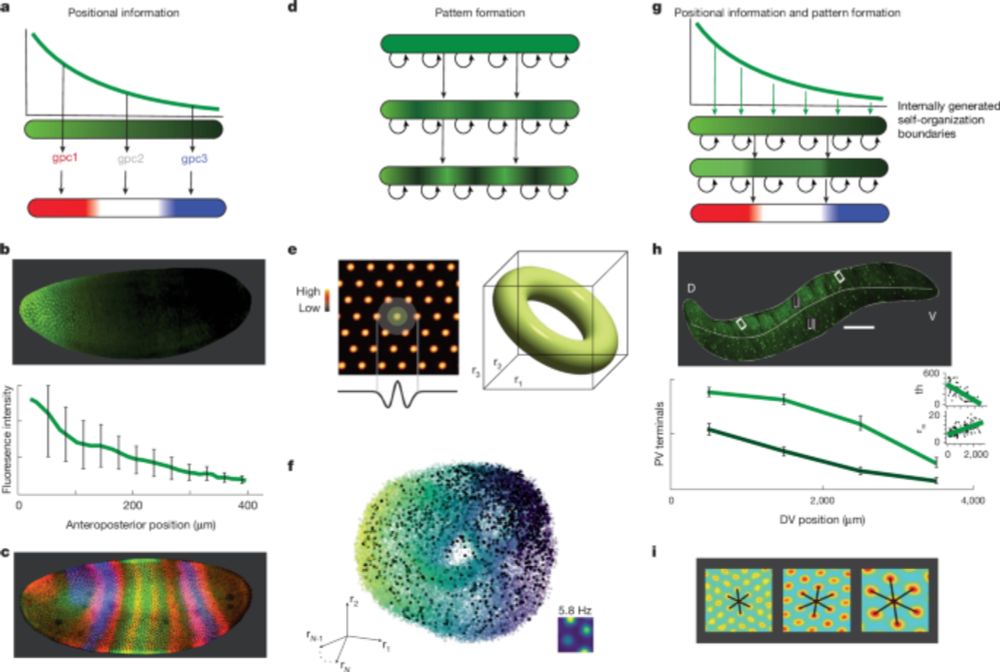Dániel Barabási
@bdanubius.bsky.social
300 followers
23 following
49 posts
Eric and Wendy Schmidt Fellow @BroadInstitute || Harvard Biophysics PhD '23 || ND Physics ‘17 || 🇺🇸🇭🇺🇸🇪🇷🇴
Posts
Media
Videos
Starter Packs
Dániel Barabási
@bdanubius.bsky.social
· Jun 16
Dániel Barabási
@bdanubius.bsky.social
· Jun 16
Dániel Barabási
@bdanubius.bsky.social
· Mar 10
Dániel Barabási
@bdanubius.bsky.social
· Mar 10
Reposted by Dániel Barabási
Dániel Barabási
@bdanubius.bsky.social
· Feb 27
Harvard_MCB
@harvardmcb.bsky.social
· Feb 26

Innate or Earned? Rethinking the Role of Activity in Brain Development - Harvard University - Department of Molecular & Cellular Biology
Sixty years ago, Harvard scientists David Hubel and Torsten Wiesel famously showed that altering visual input in young cats irreversibly changed the organization of neurons in the visual […]
www.mcb.harvard.edu
Dániel Barabási
@bdanubius.bsky.social
· Feb 26
Dániel Barabási
@bdanubius.bsky.social
· Feb 26
Reposted by Dániel Barabási
Denis Jabaudon
@djabaudon.bsky.social
· Feb 25

Three systems of circuit formation: assembly, updating and tuning - Nature Reviews Neuroscience
In this Perspective, Barabási, Ferreira Castro and Engert challenge the notion that learning and plasticity primarily drive the assembly of neural circuits. They present a tripartite framework for how...
www.nature.com
Dániel Barabási
@bdanubius.bsky.social
· Feb 25
Cedric Boeckx
@cedricboeckx.bsky.social
· Feb 25

Three systems of circuit formation: assembly, updating and tuning - Nature Reviews Neuroscience
In this Perspective, Barabási, Ferreira Castro and Engert challenge the notion that learning and plasticity primarily drive the assembly of neural circuits. They present a tripartite framework for how...
www.nature.com
Dániel Barabási
@bdanubius.bsky.social
· Feb 24

Three systems of circuit formation: assembly, updating and tuning
Nature Reviews Neuroscience - In this Perspective, Barabási, Ferreira Castro and Engert challenge the notion that learning and plasticity primarily drive the assembly of neural circuits. They...
rdcu.be
Dániel Barabási
@bdanubius.bsky.social
· Feb 24
Dániel Barabási
@bdanubius.bsky.social
· Feb 24
Dániel Barabási
@bdanubius.bsky.social
· Feb 24
Dániel Barabási
@bdanubius.bsky.social
· Feb 24

Dániel Barabási on X: "Nature over Nurture: with @GregorFPS and @EngertLab, we find that functional neuronal circuits emerge in the absence of developmental activity. Essentially, complex visuo-motor pathways mature even without activity-dependent refinement 🧵 https://t.co/UXERDqTciu" / X
Nature over Nurture: with @GregorFPS and @EngertLab, we find that functional neuronal circuits emerge in the absence of developmental activity. Essentially, complex visuo-motor pathways mature even without activity-dependent refinement 🧵 https://t.co/UXERDqTciu
x.com
Dániel Barabási
@bdanubius.bsky.social
· Feb 24
Dániel Barabási
@bdanubius.bsky.social
· Feb 24
Dániel Barabási
@bdanubius.bsky.social
· Feb 14
Dániel Barabási
@bdanubius.bsky.social
· Dec 15





